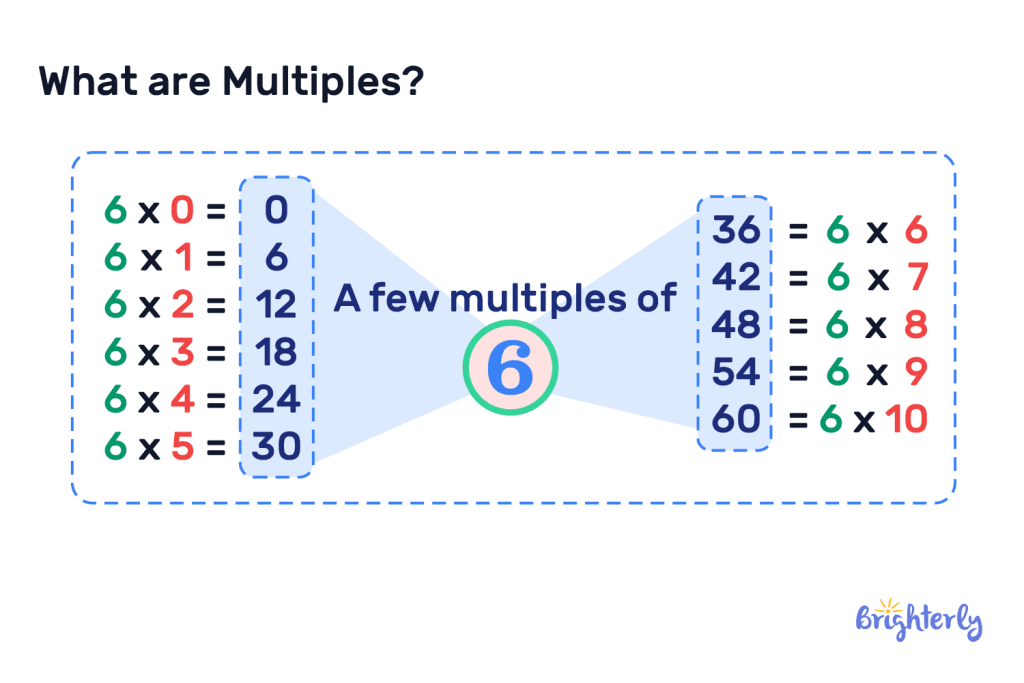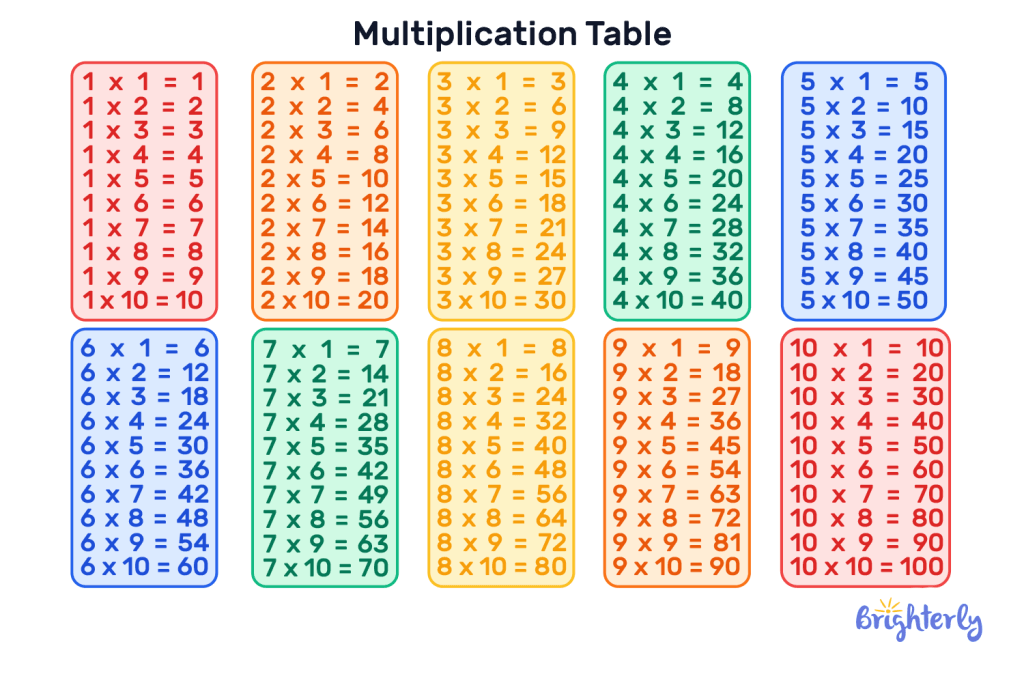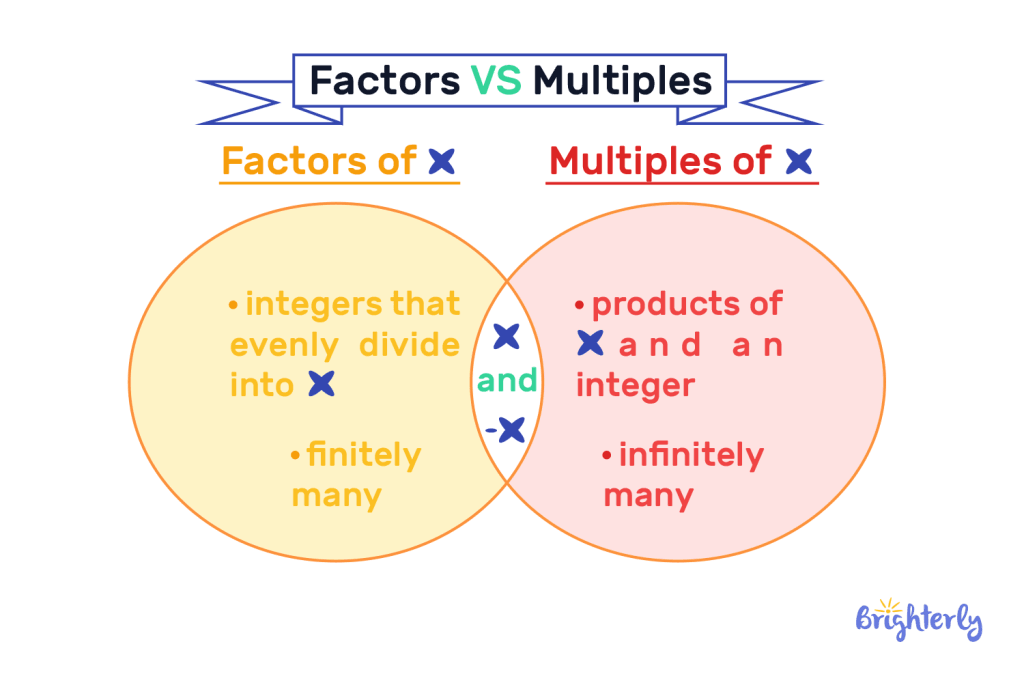Multiples – Definition with Examples
reviewed by Jo-ann Caballes
Updated on December 3, 2024
Brighterly makes learning math fun and easy with our informative articles.
Together, we’re exploring multiples.
We’ll cover the definition of multiples, provide multiples examples and share solved math problems!
What is multiple?
A multiple in math is the result of multiplying an integer by another whole number. Every time you multiply that number, you get a multiple!
Let’s use 6 as a multiple math example. Each time you multiply it, the results are multiples of 0 – so 6, 12, 18 and so on.

List of multiples
Here are lists of multiples for numbers 1-10.

Multiples: properties
The properties of multiples are:
- they’re all divisible by the numbers they are multiples of
- Every integer is also a multiple of 1 and 0 because all numbers are multiples of themselves, and any number multiplied by 0 is 0
Factors & multiples
Factors and multiples are opposites. The multiples meaning is the result of any integer multiplied by another integer. A factor, meanwhile, is an integer that divides another integer to leave a whole number. So for example, 4 is a multiple of 2, and 2 is a factor of 4!

Common multiples
If a number is a multiple of more than one number, it’s a common multiple. For example, 12 and 18 have common multiples of 36, 72 and 108. You can make these numbers by multiplying both original numbers by an integer.

Solved math tasks: examples
Here are some solved math tasks to help you practice your knowledge!
Which of the following is a multiple of 2?
- 1
- 3
- 6
- 7
Answer:
| 6, because you multiply 2 by 3 to get to it. |
The multiples of a given number are defined as…
Define multiple.
Answer:
| The multiple definition math is a whole number you get when multiplying one number by another. |
Write the first five multiples of the number 12 in order start with 0
Write your answer.
Answer:
|
Multiples: practice math problems
Multiples: worksheets
Now you know the multiples definition for kids, try our free math worksheets to practice your knowledge:
- Factors and multiples worksheets
- Multiplication worksheets
- Multi-digit multiplications worksheets
- Multiplication facts worksheets







